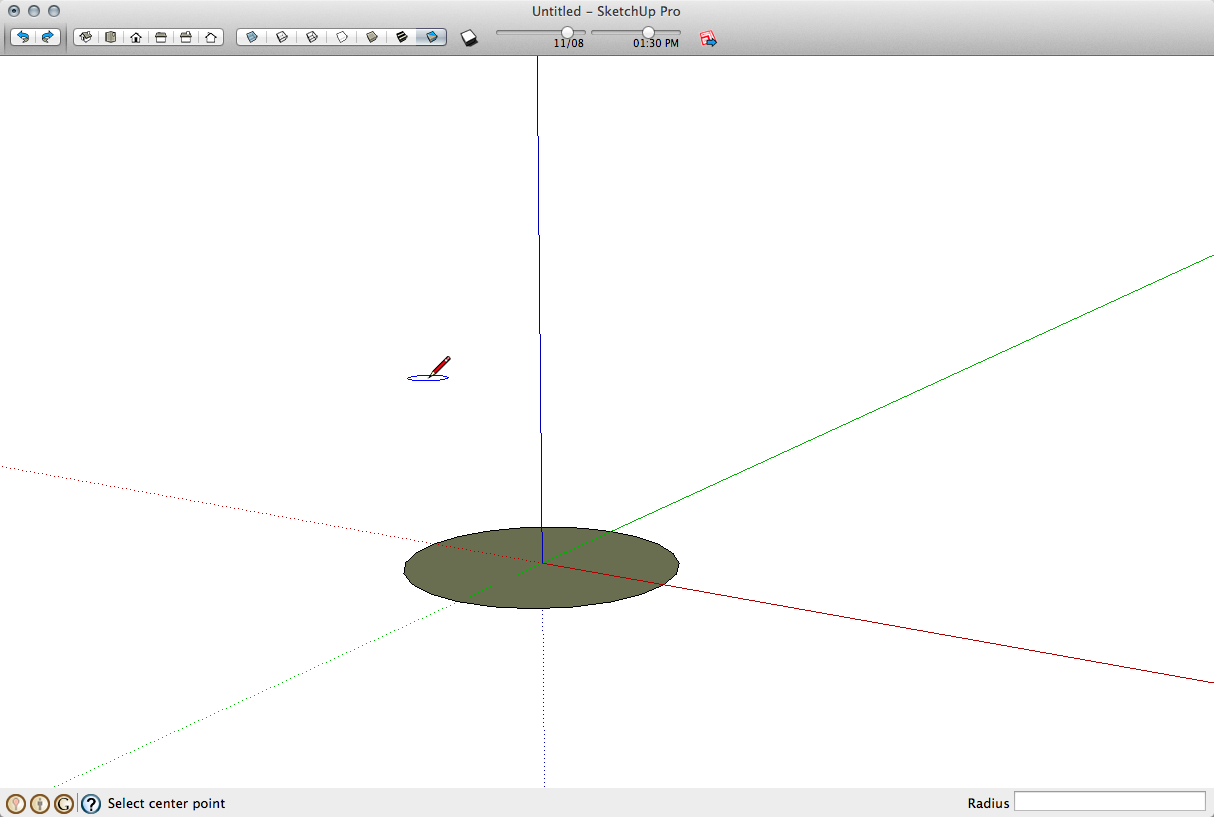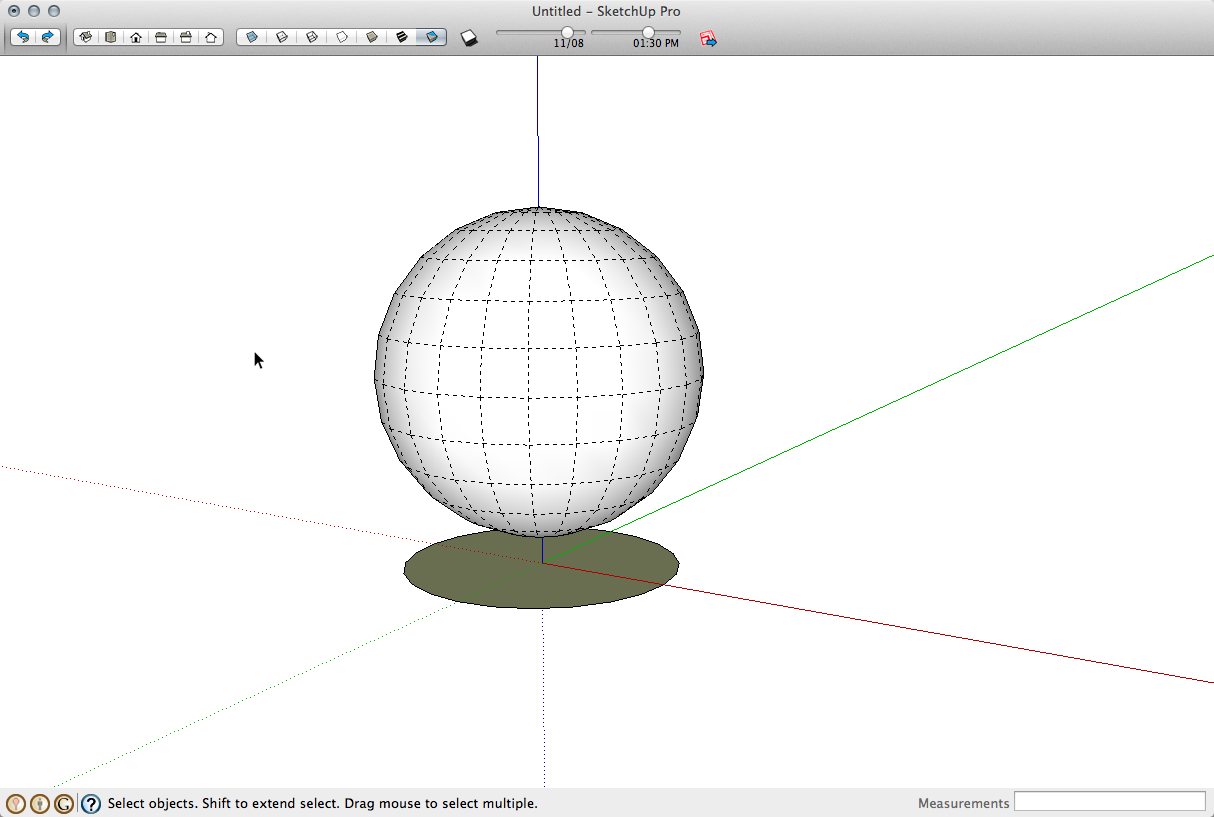Vertical --> Horizontal
-
Are you orbiting in the model space as you work? You should be able to orbit to a low view point and make it easier to get a circle drawn in the plane you want.
Out of curiosity, do you consider the circle in your screen shot to be drawn vertically or horizontally? Unless you rotated it after making it, that circle is already drawn horizontally.
-
Which is why I pointed out that the blue axis is up, I believe you have an orientation issue. It often happens when you start learning without using a default template with a person in them to give you a visual reference for up down.
-
@box said:
Which is why I pointed out that the blue axis is up,
 Your point seemed to have been missed by our prime number friend which is why I asked.
Your point seemed to have been missed by our prime number friend which is why I asked. -
The circle was initially drawn horizontally but the exercise I am working on required that it be moved into a vertical position and then draw a second circle on the horizontal plane.
The next step was to select the outer edge of the horizontal circle and then with the follow-me tool click on the surface of the vertical circle to create a sphere. That seemed to go alright but I got a message that I am unsure what to make of it. See attachment for visual.
-
OP's original question was clear. Drawing a Circle inside a component with a circle already in it--it is clear that it the default drawing orientation is "more strongly" influenced by the component axis. You must orbit to be looking more directly at the ground than if you were outside the component.
Question might be, do you need to be drawing inside a component in the first place. But it does work either way.
-
Of course, orbiting the camera does not turn the object from horizontal to vertical, except in a relative sense. Of course, it seems all of my relatives are obtuse.
-
Ok, so I redid everything and posting the steps and result. Am I doing anything wrong?
-
Not wrong. It's just a long way to get to where you're going. One more step and you'd be finished: correct the face orientation on your sphere.
I'd do it this way:



-
some methods
-
Yes, Dave, your method is much more straight forward and simple. But I was trying to follow the steps outlined in an exercise. Thanks to everyone for their input.
Advertisement







